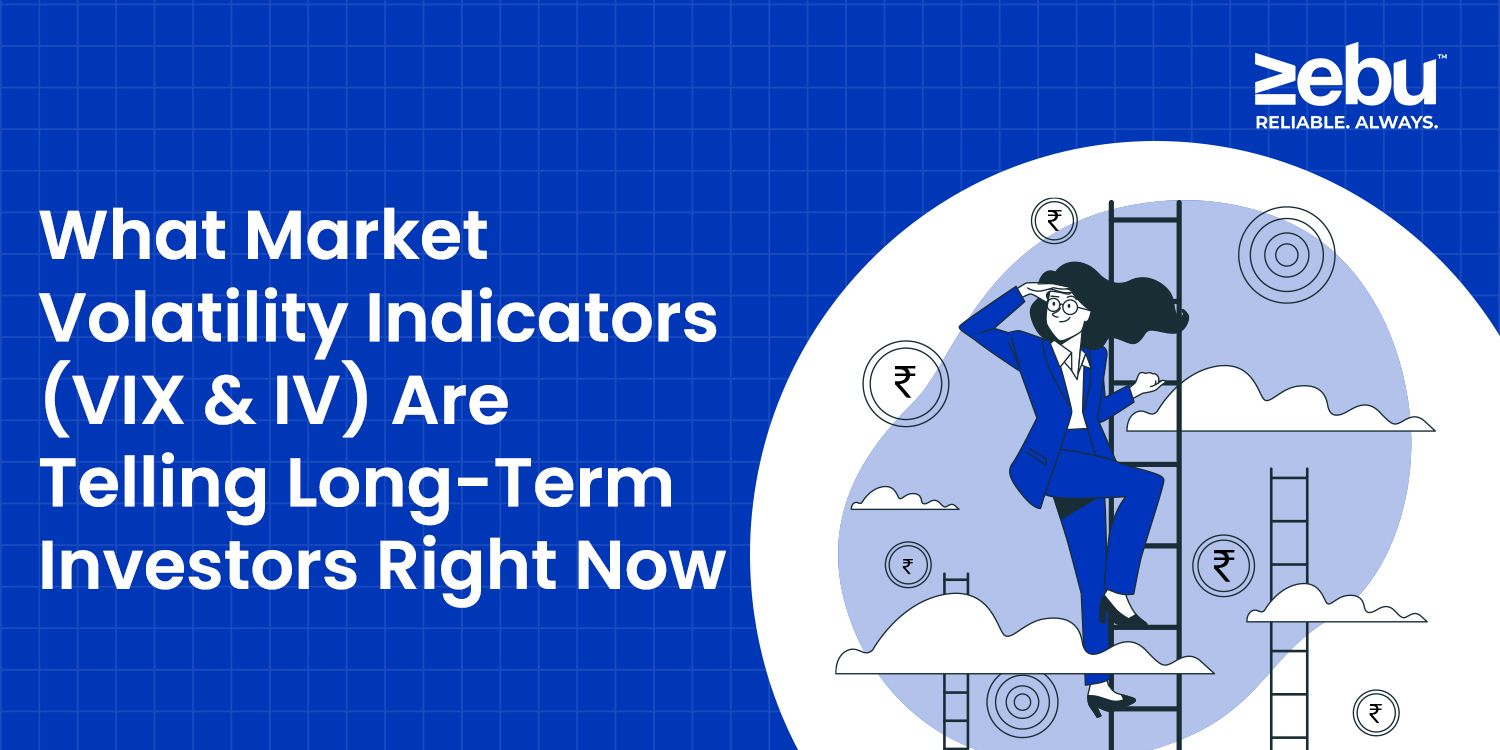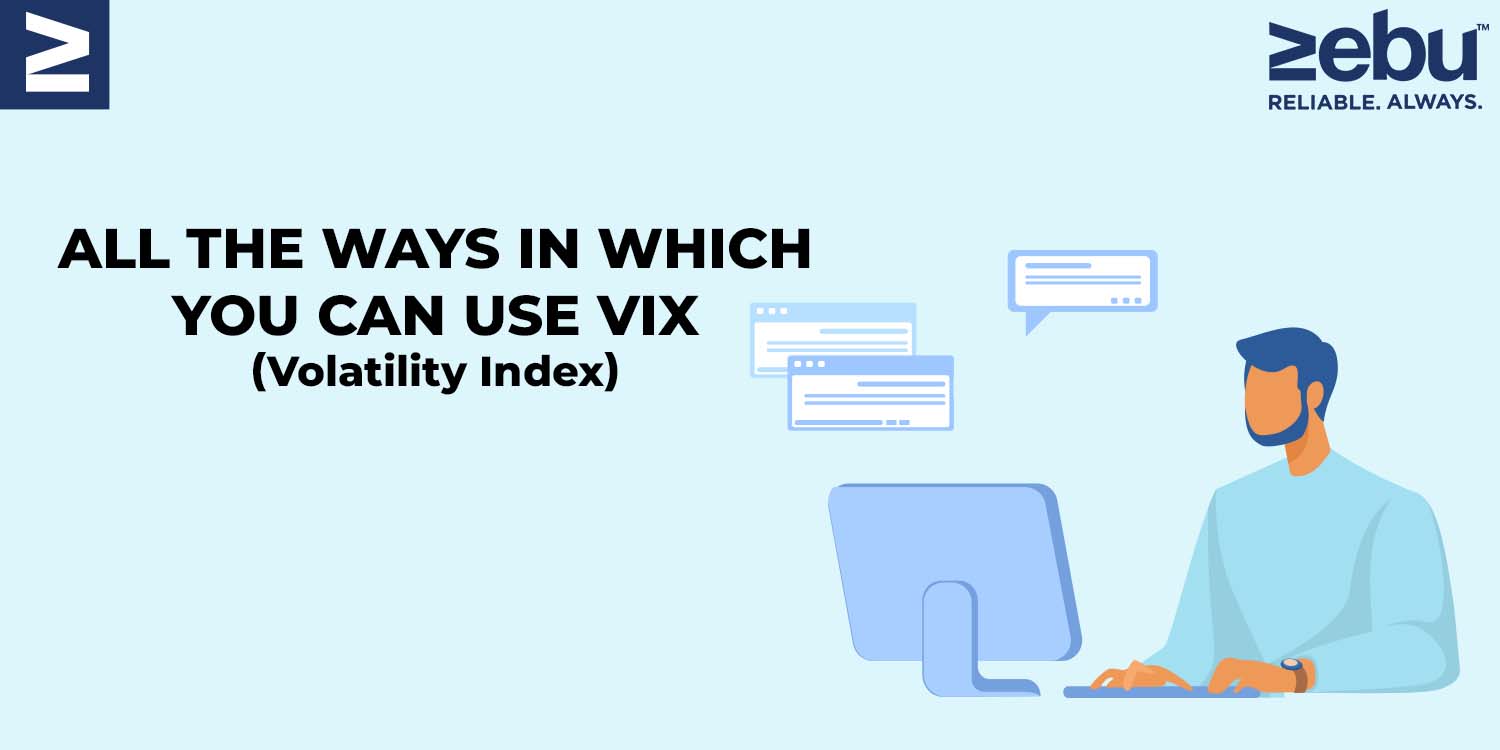
Some days, the market moves slowly. Other days, it moves like someone lit a match under it. Up 200 points in the morning, down by lunchtime, and back in the green before the last bell rings. For long-term investors, this can be disorienting—not because they’re watching every tick, but because it makes it harder to know when to step in or sit still.
Over the last few weeks, India’s equity markets have looked surprisingly strong on the surface. Nifty recently touched new highs. Sensex didn’t lag far behind. But underneath that strength is something else—a subtle tension that doesn’t show up in price alone.
To see that, you need to look at two things: the Volatility Index (VIX) and Implied Volatility (IV). Neither of these are magic tools, but they do help you feel the undercurrent. And in a market that’s moving like this one, that undercurrent matters.
What Is the Volatility Index (VIX)?
Think of VIX as a mood meter for the whole market. It doesn’t tell you whether stocks will go up or down—it tells you how much movement investors are expecting, regardless of direction.
A low VIX usually means people are calm. They expect the market to move slowly, if at all. A high VIX means tension. Maybe people are nervous. Maybe they’re uncertain. But they expect more motion—more swings. VIX is calculated based on Nifty options. If option prices start rising, it often means people are paying a premium to protect themselves from big moves. That pushes VIX higher.
So when the market hits a new high, but VIX also ticks up? That’s a clue. Something doesn’t line up.
What Is Implied Volatility (IV)?
Now let’s zoom in a little. IV is like VIX, but more specific. It applies to individual stocks or particular options, not the entire market.
If IV is high for, say, Reliance, it means traders think Reliance might swing sharply in the near future. If IV is low, they’re expecting it to stay steady. IV isn’t about what has happened—it’s about what might happen. It’s based on current option prices. And like VIX, it’s a reflection of expectation, not direction.
So What Are These Indicators Saying Right Now?
Here’s where things get interesting.
As of late June, Nifty crossed 25,200. It looked strong. Momentum was there. But VIX stayed in the 12–14 range—low by historical standards. Meanwhile, implied volatility for some large-cap options—like Nifty weekly contracts—rose to around 15.5%. That’s a mixed signal.
It suggests that even though the broader market seems stable, option traders are building in the possibility of sharp moves. And they’re not doing it for fun. They’re doing it because they’ve seen enough uncertainty—globally and locally—to hedge. For a long-term investor, this can feel like noise. But it isn’t. It’s context.
The Calm Surface Isn’t Always the Full Story
Let’s take a step back.
Imagine you’re standing at a beach. The water looks calm. But someone who understands the tide will tell you: look at the pull, not the splash. That’s what VIX and IV offer. When the market rises with low VIX but high IV, it means there’s unease behind the optimism. People are buying, yes—but they’re also covering themselves, just in case. And for a long-term investor, that doesn’t mean “exit.” It just means: walk in with your eyes open.
How Should a Long-Term Investor Interpret This?
You don’t need to react to every tick. But you can use volatility cues to pace yourself.
If you were planning to make a large lump-sum equity investment, and IV is spiking? Maybe split it up over a few weeks. Not because something’s wrong. But because the short-term ride might get bumpier. If you’re holding a good stock, and it dips on no news—but IV was already elevated? That tells you the dip wasn’t random. It was expected. That can stop you from panic selling.
And if you’re adding to a position you believe in, and both IV and VIX are low? That’s calm water. No guarantees. But you’re likely entering without turbulence.
When to Watch, Not React
Markets today are reacting to a lot of signals:
- Middle East tensions
- Currency fluctuations
- Index reshuffles
- Crude oil spikes
- FII inflows and exits
That’s a lot of noise. And VIX/IV don’t cut through it. But they do frame it. They let you ask: is this movement expected, or is something new happening? That question, more than any indicator, helps long-term investors stay patient.
Tools That Show You the Picture—Not Just the Price
If you’re using a mobile platform like Zebu, the data isn’t buried. You can check Nifty’s implied volatility. You can view VIX levels. And you can toggle option chains to see where the highest premiums are sitting.
That kind of access isn’t about trading more. It’s about watching better. For example: if an option is trading with 18% IV but the stock has barely moved in three days, that’s a clue. There’s tension—just not visible. You don’t need to act. You just need to see.
It’s Not About Prediction
This bears repeating: VIX and IV don’t predict market direction. They show expectation. It’s like watching clouds form. Doesn’t mean it’ll rain. But you carry an umbrella anyway. Long-term investors aren’t expected to trade on volatility data. But understanding when the market expects volatility? That’s just good awareness. You avoid overconfidence. You avoid surprise. You hold your positions with more comfort.
A Note on Extremes
In 2020, during COVID’s early months, VIX hit 70+. That was pure panic. In 2021, when markets were flushed with liquidity, VIX stayed below 12 for months. Complacency crept in.
Both extremes carry risk. The sweet spot? Somewhere in between. Enough movement to create opportunity. Not so much that fear clouds judgment. Today, with VIX around 13 and IV hovering near 15–16% on some key contracts, we’re in an odd zone: calm headlines, guarded behavior.
That makes this a great time to observe, not assume.
So, What Should You Do Today?
If you’re a long-term investor, here’s a simple approach:
- Look at your positions.
- Check IV levels (they’re usually listed alongside options chains).
- Take note of VIX (most market platforms display it in real-time).
- Don’t trade. Just understand.
You’re not changing your philosophy. You’re just layering in an extra bit of clarity. And in a market like this one—driven by headlines, flows, and technical structure—that clarity might be what keeps you from making decisions you’ll regret later.
Disclaimer
This blog is for informational purposes only. It does not constitute financial advice or trading recommendations. Zebu provides tools and data to support informed investing but does not guarantee returns or outcomes. Investors should consult a licensed advisor before making market decisions based on volatility indicators or any other technical data.
FAQs
- What is the difference between IV and VIX?
The VIX index measures overall market volatility expectations, while implied volatility (IV) shows expected price swings of individual stocks or options.
- Is volatility good for long-term investment?
VIX volatility index spikes can feel scary, but for long-term investing strategies, volatility often creates opportunities to buy quality stocks at better prices.
- Is high VIX bullish or bearish?
A high volatility index usually signals fear and potential market downturns, but it can also indicate attractive entry points for long-term investors.
- How does implied volatility affect stock prices?
High IV often means higher option premiums and market uncertainty, influencing short-term price movements but not necessarily long-term value.
- How can investors track market volatility?
Investors can follow VIX charts, monitor implied volatility, and use news and technical tools to gauge market sentiment and risk.
